Less Than 30% Say Nation is on the Right Track According to New National UMass Poll
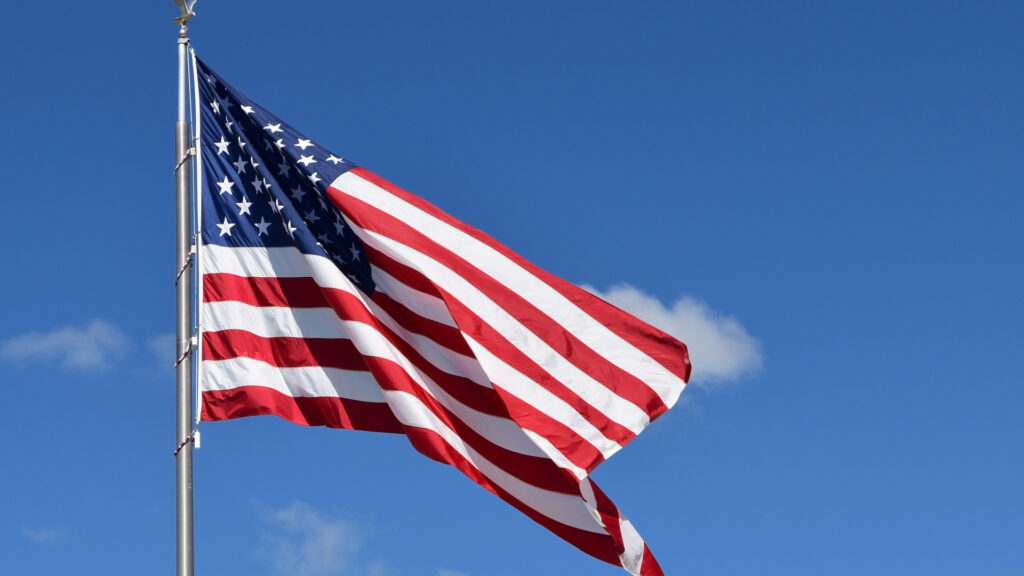
Photo: umass.edu
The new survey also finds mixed views on the “Big Beautiful Bill,” a 7-point increase in Democrats’ approval of their party and faltering Republican approval of the GOP
Source: UMass News and Media
Following a 6-point drop over the past three months, less than 3-in-10 Americans now believe the country is on the right track, a new national University of Massachusetts Amherst Poll has found.
In the new survey of 1,000 respondents, fielded July 25-30, 29% say the U.S. is on the right track, while 59% say the country is on the wrong track. The last national UMass Amherst Poll on the topic, conducted in April, found that 35% viewed the country on the right track and 54% on the wrong track.
“Since he burst onto the political scene, President Donald Trump has embraced the notion that he is uniquely equipped to restore American greatness and to put the nation back on a prosperous path,” says Tatishe Nteta, Provost Professor of Political Science at UMass Amherst and director of the poll. “However, six months into his term, Americans are not feeling optimistic about the nation’s prospects with close to 6-in-10 declaring that the country is on the wrong track. In what should be disconcerting news to the White House, we find an increasing number of Trump voters, Republicans and conservatives now agreeing that the nation is ‘pretty seriously off on the wrong track’ since we last polled in April. Whether President Trump will be able to bolster the confidence of the American people remains to be seen, but for now, Trump clearly has work to do to convince the public that he is the one to turn the tide for the better.”
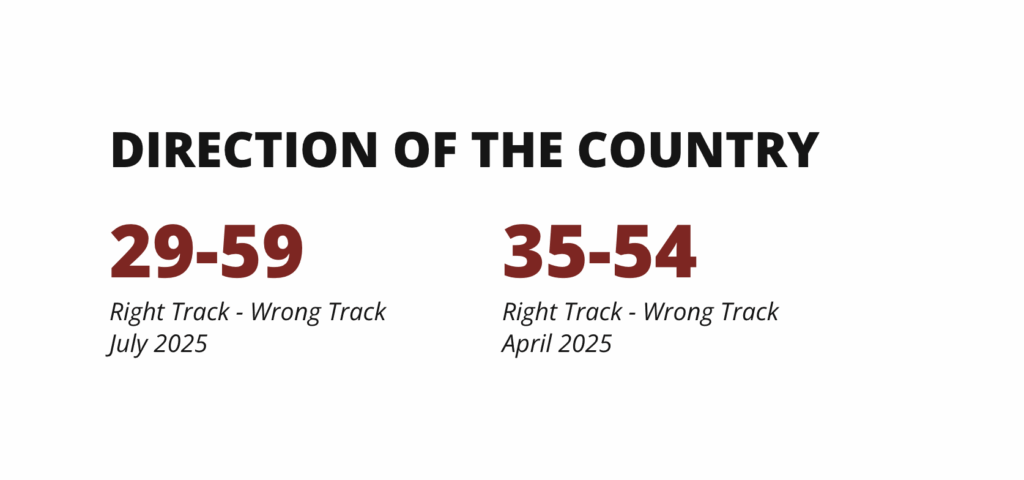
“Strikingly, majorities of every major demographic group agree that the country is on the wrong track,” says Jesse Rhodes, Professor of Political Science at UMass Amherst and co-director of the poll. “To be sure, Republicans and Trump voters are much less likely to believe the country is on the wrong track than Democrats and Harris voters, but the overall mood is definitely negative.
“A major reason why Americans believe the nation is on the wrong track is their dismal assessment of the state of the nation’s economy,” Rhodes continues. “Sixty-nine percent of Americans say the national economy is either fair or poor. While that’s an improvement from April, when 75% rated the economy as fair or poor, it still indicates that a supermajority of Americans believe the economy is in tenuous shape.”
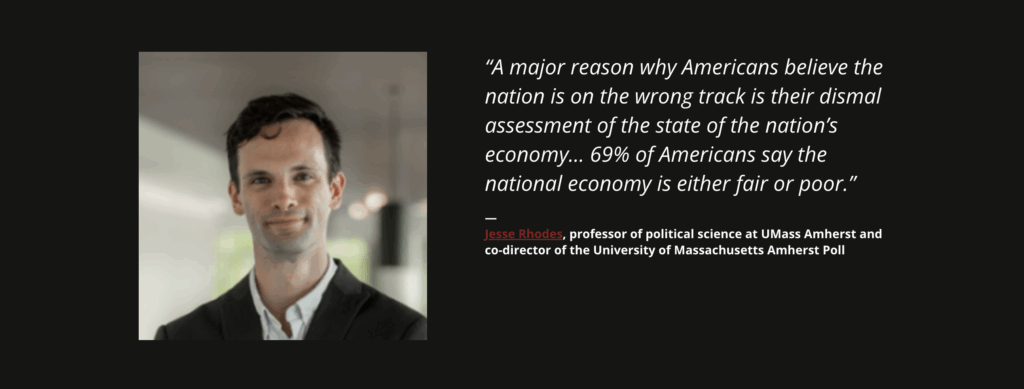
“Amidst persistently high costs, a stagnant job market, concerns regarding the impact of artificial intelligence and the economic instability brought on by President Trump’s tariff policies, one would think that the number of Americans who view the nation’s economy in a positive light would be steadily decreasing,” Nteta says. “However, we find a slight increase in optimism about the economy with a 6-percentage point increase – from 25% to 31% – of Americans who rate the national economy as ‘good’ or ‘excellent’ since April. While most Americans still view the economy as ‘fair’ or ‘poor’, the Trump administration hopes that their gamble on tariffs and tax cuts will stimulate the economy and continue to positively influence Americans’ economic outlooks.”
As for who the American public blames for the stagnant economy and rising costs, Nteta explains that the new poll shows most respondents’ fingers point directly at the president.
“Trump rode the discontent over persistent inflation to a second term in the White House, but now that he is back in the Oval Office, a majority of Americans (52%) believe that the buck stops with him, blaming him for the increase in the costs for groceries, gas, utilities and clothing,” Nteta says. “With the economy still a potent force in influencing vote choice, Trump and the Republican Party have work to do to lower costs or possibly face an electorate eager to ‘throw the bums out’ in the 2026 midterm elections.”
Does the Public See the Big Bill as “Beautiful?”
The latest UMass Amherst Poll also asked respondents their views on the budget bill referred to as the “Big Beautiful Bill.”
“Regarding policies embedded in the Big Beautiful Bill, we see clearly which aspects are more popular and which are not,” says Raymond La Raja, Professor of Political Science at UMass Amherst and co-director of the poll. “The populist policies, like work requirements for SNAP (52% support) and tax relief on tips and overtime (58% support), resonate across class lines – even among some Democrats and independents. Making 2017 tax cuts permanent (42%) garners a plurality of overall support as well. Safety net cuts are toxic, though, including proposals to reduce Medicaid funding (23% support). Scrapping renewable energy credits (27% support) and increasing immigration enforcement (37% support) and defense spending (38% support) are also unpopular outside the conservative core.”
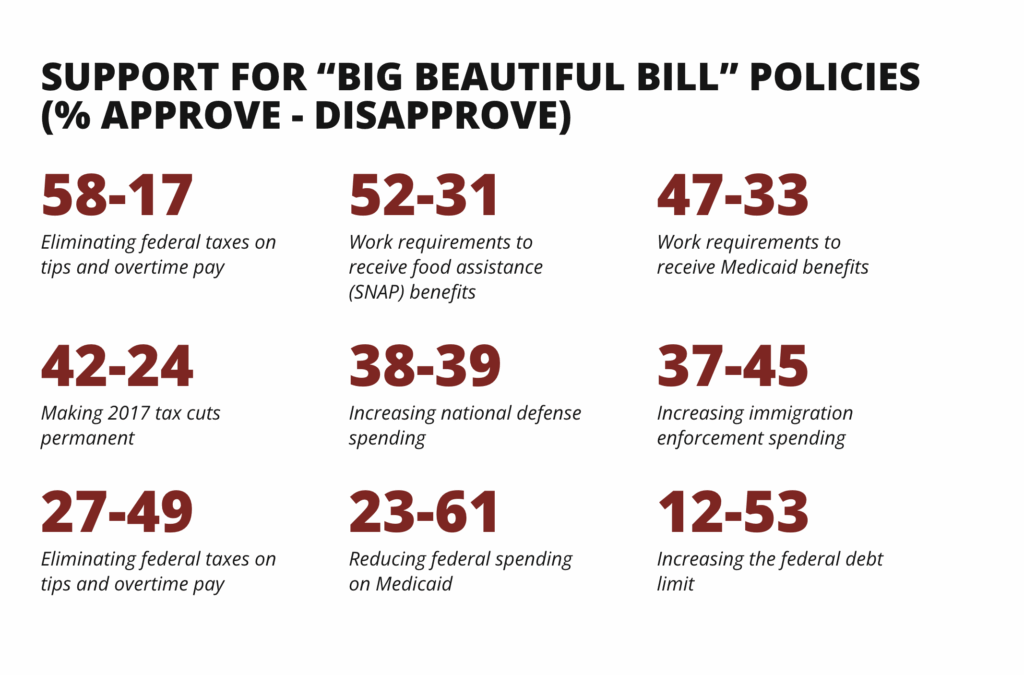
Overall, La Raja does not see the bill as one that will help unify the country. “The BBB’s support is highly polarized by party, education, age and race, suggesting it’s better for energizing the base than building a broader coalition,” he says. “This bill plays well with Trump’s base – especially on symbolic issues like work requirements and taxes on tips. Republican support on the policies we measured all exceeds 50%, except for raising the debt limit at just 18% support. Independents embrace the populist tax relief but reject cuts to safety nets and green energy rollbacks, which indicates limited crossover appeal. The Big Beautiful Bill is radioactive among Democrats – the only soft spot is eliminating taxes on tips and overtime, which taps into working-class concerns.”
Views on the Democratic and Republican Parties
Detailed information on Americans’ views of the two major political parties was also revealed by the new UMass Amherst Poll. While both parties score dismal approval ratings overall, the survey indicates slight movement in different directions for Democrats and Republicans.
“In the midst of rising costs, widespread protests against the Trump administration and questions concerning President Trump and the GOP’s handling of the Epstein case, many would have thought that Americans would begin to view the Democratic Party in a more favorable light,” Nteta says. “While approval of the Democratic Party has slightly increased since April, from 29% to 31%, this remains lower than that of the Republican Party (35%). However, the GOP’s approval rating has sunk 6 points since April and, looking at internal partisan support for each party, we find Democrats’ approval of their own party up 7 points over the last three months – from 57% to 64% – while Republicans’ approval of their own party has dropped from 88% to 81%.”
These shifts show that Democratic lawmakers’ recent efforts to push back against Trump and Republicans may be working to reinvigorate the party’s loyalists, after seeming to have no clear response to the tsunami of conservative policies and federal cuts that were enacted during the first three months of the new presidency.
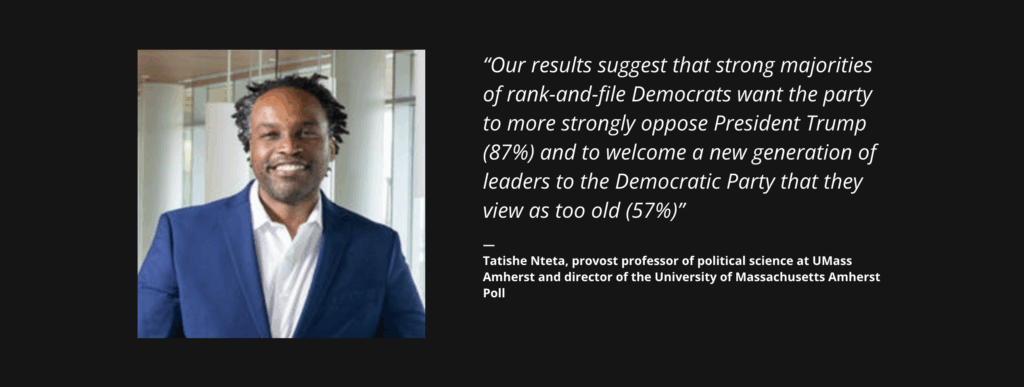
“In the aftermath of the 2024 election, when Donald Trump and Republicans in Congress resoundingly beat the Democratic Party, many have sought to provide prescriptions to the supposed maladies of the Democratic Party,” Nteta explains. “While this advice has run the gamut from embracing a more progressive agenda to moving the party closer to the center, our results suggest that strong majorities of rank-and-file Democrats want the party to more strongly oppose President Trump (87%) and to welcome a new generation of leaders to the Democratic Party that they view as too old (57%). Whether these changes will yield electoral success in 2026 and beyond is still to be seen, but if the Democratic Party wants to energize its base it may want to start by listening to what their supporters want most from the party.”
“Democrats should be very concerned about how negatively their own base views the party,” Rhodes warns. “Only 32% of 18–29-year-olds, 41% of African Americans and 36% of Latinos approve of the Democratic Party. About 30% of middle-class voters have positive views of the Democrats. These are truly dismal numbers. Republicans are unpopular, too, but if Democrats can’t build more enthusiasm among their own base, it’s going to be a heavy lift for them to win back Congress next year.”
“Rank-and-file Democrats in our poll are sounding a particularly clarion call to party elites,” says Alexander Theodoridis, Associate Professor of Political Science at UMass Amherst and co-director of the poll. “A striking 87% want their party to more strongly oppose President Trump.”
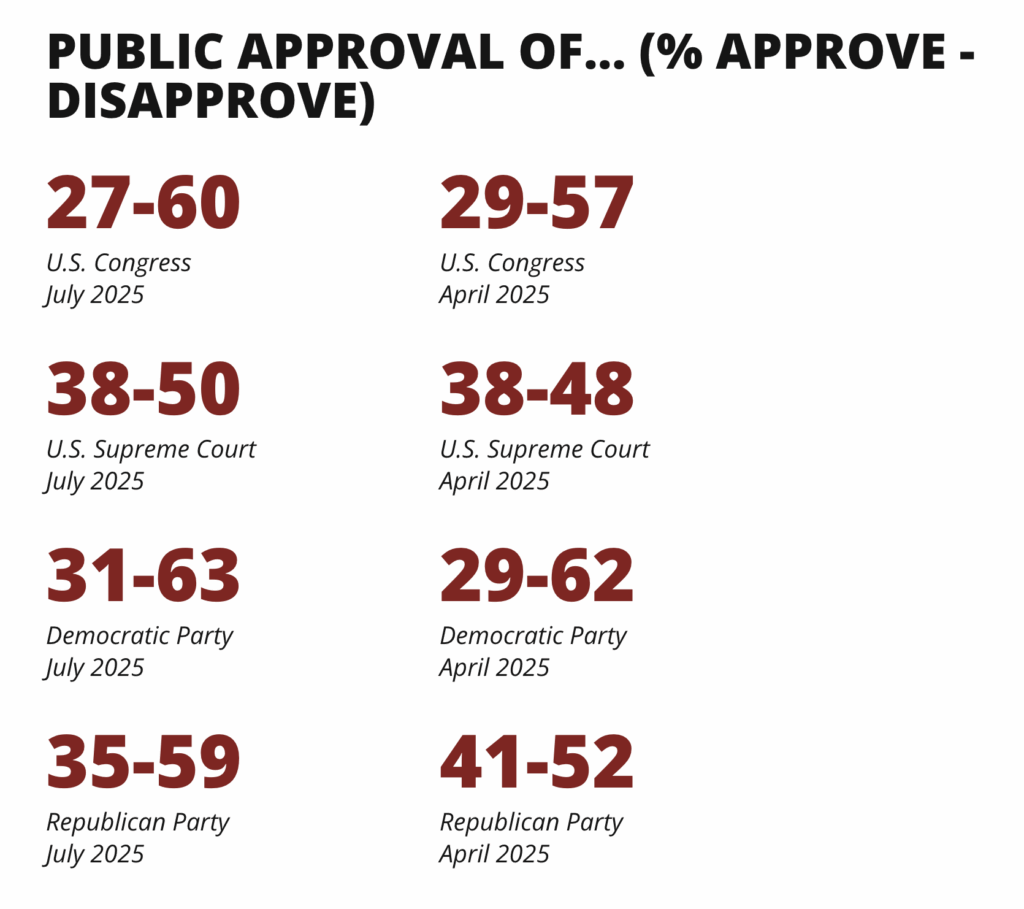
“You can see the dilemma facing Democratic leaders,” La Raja says. “They are asking themselves, do we energize the base or modify our image to satisfy possible swing voters? The base wants them to fight the president and stay true to liberal principles, while potential swing voters are less enthusiastic about this path. For example, Democratic voters overwhelmingly want the party to more strongly oppose President Trump compared to just 36% of independents. But independents are more than twice as likely to say the party focuses on issues that do not benefit them – 44% say this, compared to 21% of Democrats. This pattern repeats itself when we ask whether the party is too liberal – 35% of independents say this compared to 16% of Democrats, and nearly 40% of independents say the party ‘cares too much about transgender people’ compared to 17% of Democrats. The one thing they agree on? Similar majorities of Democrats (57%) and independents (54%) believe the Democratic leadership is too old.”
As for the GOP, Nteta sees potential midterm headwinds for the party that currently has a stranglehold on federal power.
“The past six months have witnessed a whirlwind of legislative and executive activity spearheaded by the Republican Party,” Nteta says. “From the passage of the Big Beautiful Bill to the deployment of the National Guard and Marines to quell immigrant protests, to the growing scandal concerning the Jeffey Epstein files, the Republican Party and President Trump have been at the center of a historic political transformation of the nation. Our results suggest that Americans may not be viewing these changes in a favorable light, as approval for the GOP has dropped 6 percentage points since April. We see similar drops in approval for the Republican Party across gender, educational, racial and even partisan and ideological groups in the nation. With a little over a year to go until the 2026 midterm, Republican leaders in the House and Senate will need to address these declining numbers or potentially face a new identity as the minority party in Congress.”
“The Republican Party enjoys significant advantages over Democrats in approval among important segments of the electorate,” Rhodes explains. “They have an 11-point advantage (37%-26%) among men, a 13-point advantage (44%-31%) among Americans 55 and up, and a 15-point advantage (41%-26%) among whites. These are large and important groups – and they vote. Although Trump and Republicans are taking a beating in the court of public opinion, they can at least find solace in the fact that they are much more popular than Democrats among these critical groups.”
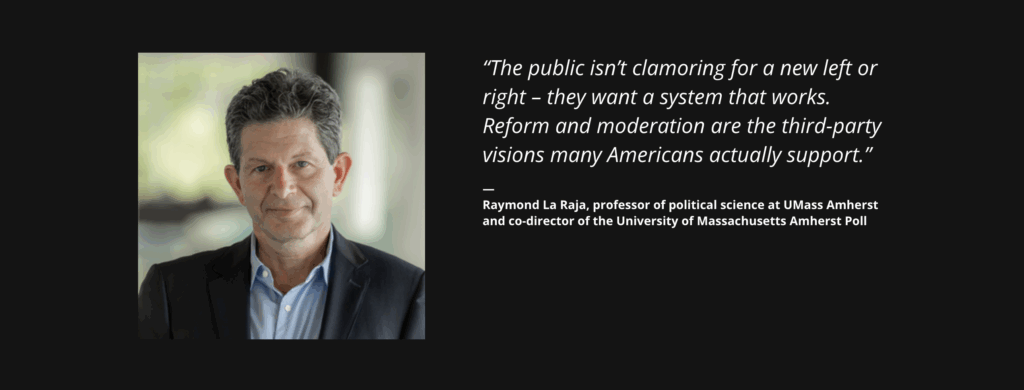
La Raja adds that the party that ultimately finds success in 2026 may be the one that figures out the enigma that is the “disaffected independent voter.”
“Independents aren’t centrists in the middle of the partisan spectrum – they’re disaffected from both parties in different ways,” he says. “They share Republicans’ skepticism about Democratic priorities but also fault Republicans for neglecting marginalized groups. For example, they are more critical of Democrats on a lack of economic focus and cultural issues; just 19% of independents say the Democratic party cares about the economic struggles of ordinary Americans, compared to 77% of Democrats. At the same time, a significant share of independents believe Republicans care too little about people of color; 38% of independents say Republicans care too little about people of color compared to just 9% of Republicans.”
This disaffection toward the current state of politics is creeping across demographics, La Raja says. “The most disaffected Americans are the young, the independents and the working class,” he explains. “They’re not just tired of the parties; they seem to feel left out of the political system. Seventy percent of voters under 30 say they are unsatisfied with the two-party system, compared to 51% of voters 55-years and older. Not surprisingly, 80% of independents are dissatisfied with the two-party system – why else would they refuse to choose one of them? By contrast, fewer than half that amount of Republicans (38%) are dissatisfied, which is not surprising because their party holds power. And 67% of low-income voters are dissatisfied compared to 55% of those with high incomes.”
La Raja says that those clamoring for a “third way” or a break from the two-party system aren’t looking to the extremes to remedy the current political malaise – they’re looking to the middle.
“When asked about what kind of third party they would want, the top two choices are parties that focus on political reform (26%) and centrism/moderation (23%) – together, they account for nearly half the electorate (49%). There’s little appetite for ideological third parties. Only 11% want a progressive one and 10% a conservative one. In other words, the public isn’t clamoring for a new left or right – they want a system that works. Reform and moderation are the third-party visions many Americans actually support.”
Topline results and crosstabs for the poll can be found at www.umass.edu/poll
